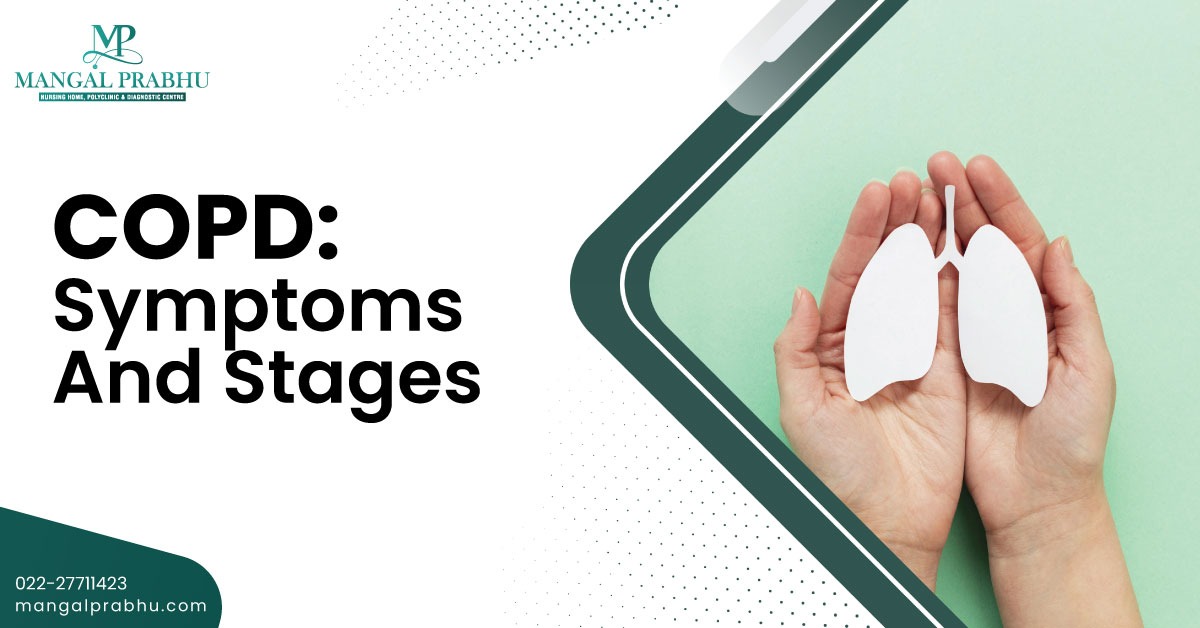
A lung condition called chronic obstructive pulmonary disease (COPD) makes it difficult to breathe. As COPD is a progressive illness, it deteriorates over time and can ultimately result in disability or death.
Long-term exposure to irritants like tobacco smoke, air pollution, chemical fumes, or dust is usually what leads to COPD. The most typical signs of COPD include chest tightness, wheezing, chronic coughing, and shortness of breath.
These symptoms may appear gradually over time and be misdiagnosed as normal aging symptoms or the effects of a sedentary lifestyle. In a Multispecialty Hospital in Navi Mumbai, lung function tests, physical exams, medical histories, and imaging tests like X-rays and CT scans are all used to diagnose COPD.
Most typical signs and symptoms include:
- Breathing problems, especially when exercising
- chronic cough that frequently produces mucous
- loud or wheezing breathing
- stiffness or discomfort in the chest
- Weakness and weary
- respiratory diseases that are common
- Unwanted loss of weight
- Emboli in the legs, feet, or ankles
Also Read: 5 Factors To Consider While Choosing A Right Multispecialty Hospital
4 Stages of COPD:
Stage 1 (Mild):
In stage 1 COPD, the forced expiratory volume in one second (FEV1) is equal to or greater than 80% of the expected normal value. The airflow limitation is also minor. At this point, patients may have a persistent cough and more mucus than usual, but they might not feel noticeably short of breath.
Stage 2 (Moderate):
The FEV1 ranges from 50 to 80% of the expected normal value in stage 2 COPD, which is characterized by moderate airflow limitation. Those who are in this stage could feel coughing and mucous production, as well as shortness of breath when exercising.
Stage 3 (Severe):
The FEV1 is between 30 and 50 percent of the expected normal value in stage 3 COPD, which is characterized by significant airflow limitation. At this point, patients may also have other symptoms like weariness, recurrent respiratory infections, and even more severe shortness of breath.
Stage 4 (Very Severe):
The FEV1 is less than 30% of the expected normal value in stage 4 COPD, or less than 50% in respiratory failure. The airflow limitation is quite severe at this stage. People might have very little airflow at this point, along with major constraints on everyday activities, an oxygen dependency, and a lower quality of life.
According to a General Physician in Navi Mumbai, the severity of the condition and the patient’s particular symptoms determine whether a nebulizer should be used for COPD treatment. Nebulizers are generally utilized by those with moderate to severe COPD who have trouble using inhalers or other forms of treatment.
Emphysema
Emphysema is a kind of COPD, and the severity of the condition is normally determined by the outcomes of lung function tests. The Global Initiative for Chronic Obstructive Lung Disease (GOLD) approach, which classifies COPD into four stages based on the severity of airflow limitation, is the most widely used COPD staging system.
The severity of the condition and the patient’s particular symptoms determine whether oxygen therapy is required for COPD. Those with severe COPD, which is often categorized as Stage 3 (Severe) or Stage 4 (Very Severe COPD), are generally advised to use oxygen therapy. Using supplementary oxygen to improve blood oxygen levels and assist in treating symptoms including exhaustion, disorientation, and shortness of breath is known as oxygen therapy.
